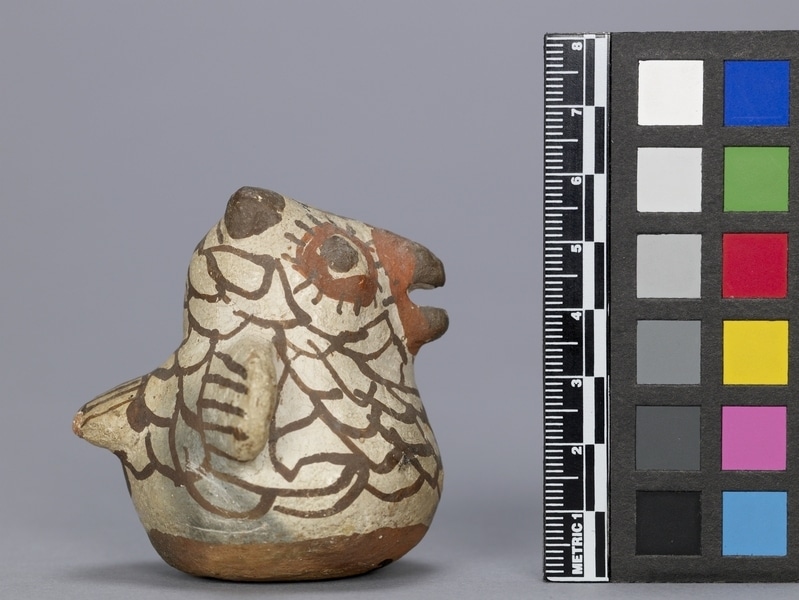Owl Figure Item Number: 2731/19 from the MOA: University of British Columbia





Description
Roughly formed, hand coiled red clay pottery owl salt shaker with four holes in head and a large hole in base. Details are crudely hand painted in brown and red on a buff slipped background, the base is unpainted. Feather pattern covers most of body, dissimilar wings and tail are striped on one side. Circular ears and eyes with multi-lashed ring protrude slightly from head top. Two-tone open beak.
History Of Use
salt shaker
Narrative
Pottery owls became important tourist items when the railroad and then Route 66 allowed for large numbers of tourists to travel to the Southwest. This collection of 192 Zuni pottery owls includes examples from before 1900 through 2006. Zuni potters continue to make owls and family traditions in the medium continue. While many younger potters are innovating, the owls are distinctly Zuni.
Iconographic Meaning
In traditional Zuni lore, the owl is considered a wise guardian and protector. An owl’s ability to see at night means that it sees what others cannot, giving it understanding of the spiritual and physical world.
Item History
- Made in New Mexico, USA
- Collected in Albuquerque, New Mexico, USA
- Owned by David Evans and Daniel Ma before February 24, 2009
- Received from David Evans (Donor) and Daniel Ma (Donor) on February 24, 2009
What
Who
- Culture
- Zuni
- Previous Owner
- David Evans and Daniel Ma
- Received from
- David Evans (Donor) and Daniel Ma (Donor)
Where
- Holding Institution
- MOA: University of British Columbia
- Made in
- New Mexico, USA
- Collected in
- Albuquerque, New Mexico, USA
When
- Ownership Date
- before February 24, 2009
- Acquisition Date
- on February 24, 2009
Other
- Item Classes
- ceramics
- Condition
- fair
- Accession Number
- 2731/0019